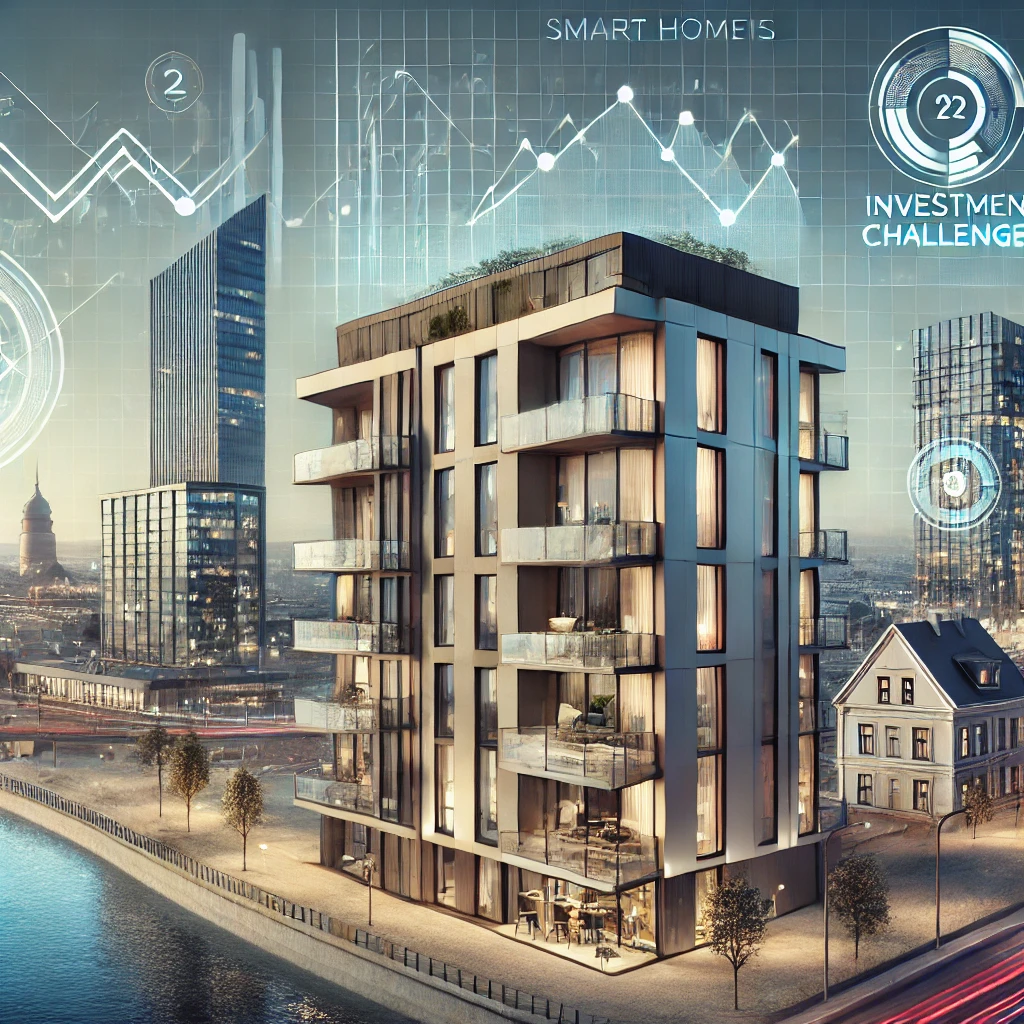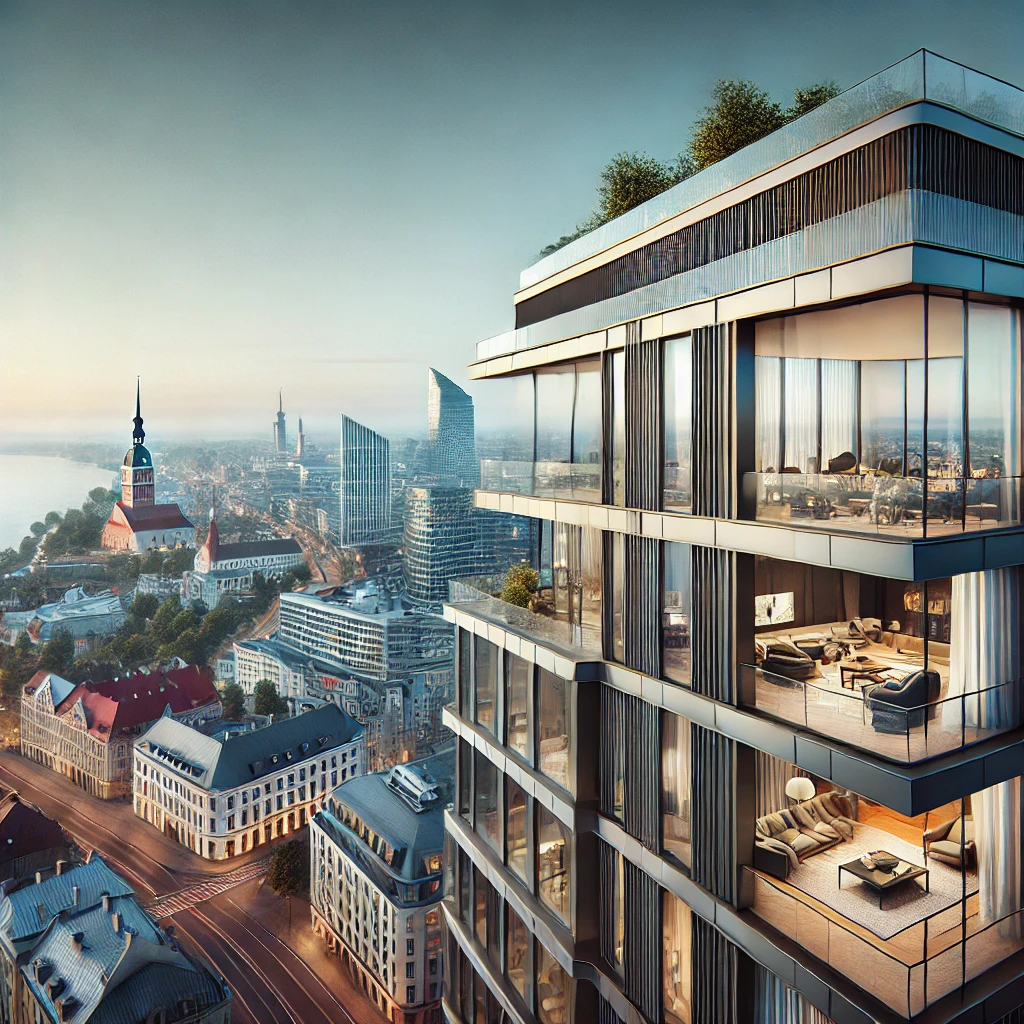Why does Estonia attract foreign buyers more than Latvia and Lithuania?

- Why does Tallinn attract foreign investors in the real estate sector?
- What are the current trends in the real estate market in Tallinn and the Baltic States?
- What is the current situation in the real estate market in Tallinn, Riga, and Vilnius?
Increased interest of foreign investors
In recent years, there has been a noticeable increase in interest from foreign investors in Estonia, which clearly sets this country apart from Latvia's Riga and Lithuania's Vilnius. In particular, buyers from Scandinavia, especially Finns, are actively participating in real estate acquisitions in Tallinn.
Against the backdrop of rising visa prices for residence in Latvia, as well as the political situation regarding Crimea and the decline of the ruble, people from Russia and other CIS countries have started to show less interest in purchasing real estate in Riga. In Vilnius, this situation is even more pronounced — interest from buyers from post-Soviet countries has also noticeably decreased.
Diversity of developers' approaches
Despite the close proximity of the Baltic countries, developers' approaches to the finishing of new residential properties vary significantly. In Tallinn, luxury apartments are usually offered with complete finishing, which attracts more buyers.
In the center of Riga, there are options available both with and without finishing, which raises quite a few questions for potential clients. In Vilnius, however, apartments are most often sold without final finishing.
- Residents only receive leveled floors and walls.
- Minimum necessary electrical networks.
Lithuanian developers assure that this sales scheme is familiar to local clients; however, many foreign buyers face difficulties as they have to handle the renovations themselves.
Modern technologies in construction
From my point of view, the number of new construction projects in Tallinn slightly exceeds similar figures in neighboring countries. Estonian developers are quite quick to implement modern technologies aimed at improving energy efficiency and utilizing systems."smart home".
Many residential spaces in Tallinn are already equipped with devices for managing integrated solutions, which has become common for the locals. In Latvia and Lithuania“smart homes”They also take place, but their implementation is not as active and largely depends on the specific project.
In the elite new buildings of Riga and Jurmala, there is also a push to implement such technologies, but in Estonia, this process has taken on a larger scale.
Economic conditions
I think the higher innovation rates in Estonian apartment complexes can be explained by the fact that developers in central Tallinn can set higher prices for their properties compared to competing offers in Riga and Vilnius. The standards in the Estonian market are significantly higher, and the competition is much stronger.
It is no secret that economic development in Estonia is progressing at a faster pace, partly due to the rise in average salaries. For example, from 2014 to 2017, the minimum wage in this northern Baltic country increased by 10% each year.
The real estate market in Tallinn
Since the costs of implementing new residential projects are roughly comparable across all three countries, it is worth noting that the expenses of Estonian developers are slightly higher. Construction costs are rising, but while the final product's costs are quite similar in all three Baltic countries, the revenues from sales vary significantly.
This clearly highlights the economic conditions and preferences of buyers in different regions. Thus, the real estate market in Central Tallinn continues to be attractive to foreign investors, offering them a unique opportunity to acquire quality and modern properties.
Real estate prices in the center of Tallinn
In the heart of Tallinn, the capital of Estonia, premium real estate prices range from 2900 to 3200 euros per square meter. Meanwhile, in other major cities like Riga and Vilnius, similar rates are between 2600 and 2800 euros per square meter.
Unique features of the apartments
It is worth noting that among the new residential complexes, you can find apartments with unique features, such as:
- breathtaking views;
- spacious terraces;
- the presence of private saunas.
These factors often lead to an increase in apartment prices. In rare cases, the cost may exceed 4000 euros per square meter.
Comparison of housing prices in the Baltic States
However, overall, the property prices in the capitals of the Baltic States, including Latvia, Estonia, and Lithuania, differ only slightly and range from 150,000 to 300,000 euros.
Investment interest of foreign buyers
Foreign investors typically focus onprofitabilityTheir investments often involve purchasing real estate not for living, but for profit. Unfortunately, it must be acknowledged that the returns in the residential real estate segment in the capitals of the Baltic states leave much to be desired.
Analysis of rental and yield
Analyzing the prices for sales and rental rates for elite apartments, one can notice that the average yield in the centers of Tallinn, Riga, and Vilnius ranges from 4 to 6% per year, with Estonia having a slightly lower figure compared to its neighbors.
Parking problems in Riga
It is important to pay attention to the parking issues in Riga, where the cost of parking spaces can range from 20,000 to 30,000 euros. This additional burden significantly increases the overall expenses for buyers and, consequently, reduces the profitability of their investments.
Renting accommodation in the Baltics
Renting housing in business-class projects and above in Riga, Vilnius, and Tallinn has fairly stable rates, ranging from 10 to 13 euros per square meter per month. These rates apply to both apartments and private residential houses.
However, there are individual listings with higher prices. For example, in Riga, you can find apartments where the rent exceeds 16 euros per square meter, although this is more of a rarity than a common occurrence.
Insufficient returns as a factor for investors
It is worth noting that if the price of an apartment in the Baltic countries provides a yield of less than 4% per year, it does not attract the interest of foreign investors. Potential buyers can find more attractive investment opportunities. For example, in Stockholm, the yield is 3% per year, but the demand for rentals is so high that investors from our region are unlikely to be interested in offers with a yield of only 4%.
The need to reconsider approaches
To achieve the necessary income in the Baltic region, it is essential to either raise rental rates or lower housing prices.

In my opinion, nowadays we can observe some convergence of opinions among experts: market trends are gravitating towards a sustainable long-term profit level of 6% in our region, including a risk premium of around 2%. Looking at new initiatives, Tallinn attracts the most attention, where there is intense construction of both residential and office complexes.
However, it seems to me that the number of office buildings significantly exceeds the actual demand. Over the past three years, an average of about 300 new apartments have been put into operation each month in Vilnius, approximately 190 in Tallinn, and around 130 in Riga.
Problems with new buildings in Riga
The situation with new buildings in Riga is that the city's infrastructure was historically designed for a significantly larger population than currently resides here. We have great potential for renovating old buildings, which forces investors to be cautious and plan their activities more thoroughly.
The influx of foreigners remains minimal, and it is unlikely to increase in the near future. During times of economic growth, this was not as relevant, but today it is important to consider the determination of local buyers and their financial capabilities.
Trends in housing prices
The current trend is that it is becoming increasingly difficult to obtain the prices that existed before in the center of Latvia. Owners looking to make deals on unfinished projects are facing the need to lower their price expectations. This has also been observed in developers' efforts to focus their attention on creating new properties on the outskirts of the center or even beyond its borders.
The prospects of Tallinn
At the moment, Tallinn is at the center of all discussions. However, I have some concerns: after the crisis, there has been the highest price increase here for both residential real estate and properties located in the very center of the capital. In the capital of Estonia, the number of new projects is increasing at a rapid pace:
- In 2017, the construction of about 3,000 apartments was completed, which is 50% more than in the previous year.
However, the number of unsold properties continues to rise. Previously, prices for new apartments were increasing by more than 5% per year, but under the current conditions, this cannot be sustained in the long term.
The situation in Vilnius
In Vilnius, the situation with the sale of new apartments in the city center is supported by a large number of foreign companies that have opened their offices and international service centers. The salaries of employees at these companies are significantly higher than the national average, and such workers create a stable demand for housing in the center of the Lithuanian capital.
According to statistical data:
- In Vilnius, at least 13,000 employees work in the field of foreign representations.
- In Riga, this number does not exceed 8000.
This is quite understandable, as the number of students in Lithuania is significantly higher — 140,000 compared to 86,000 in Latvia.
Conclusion
Observing the current trends in the real estate market of the Baltic capitals, I cannot help but note how significantly the approaches to construction and housing provision differ in Tallinn, Riga, and Vilnius. Indeed, Estonia attracts foreign buyers more actively due to the high level of completion of new projects and a more dynamic economic development.
I see the advantages of Tallinn in that developers here strive to implement modern technologies, such as systems"smart home"This increases the attractiveness of housing for investors. Unfortunately, in Riga and Vilnius, such a level of demand is not as high, which affects the overall appeal of these markets.
Investment attractiveness
Nevertheless, despite the active interest of foreign investors in Estonian real estate, I would be cautious in making predictions about profitability. The actual returns in the housing market in the capitals of the Baltic countries are only4-6%Annual returns, which do not always justify the investments. As practice shows, investors closely monitor potential risks, and if they have alternatives with higher returns, they may prefer other markets.
Recommendations for improvement
Taking all these factors into account, I believe it is important for local developers and government authorities to show more initiative in improving conditions for foreign investors. This could include:
- Review of housing prices
- Increase in rental rates
What will strengthen the position of the Baltic region as an attractive place for investment in the long term?
Prospects for development
Openness to dialogue and a desire for improvement will be key to the development of this market in the future. I hope that future changes will make life in the Baltic countries more comfortable and profitable for both foreign investors and local residents.
Comment
Popular Posts
9 October 2024
272
9 October 2024
1966
Popular Offers




Subscribe to the newsletter from Hatamatata.com!
Subscribe to the newsletter from Hatamatata.com!
I agree to the processing of personal data and confidentiality rules of Hatamatata




